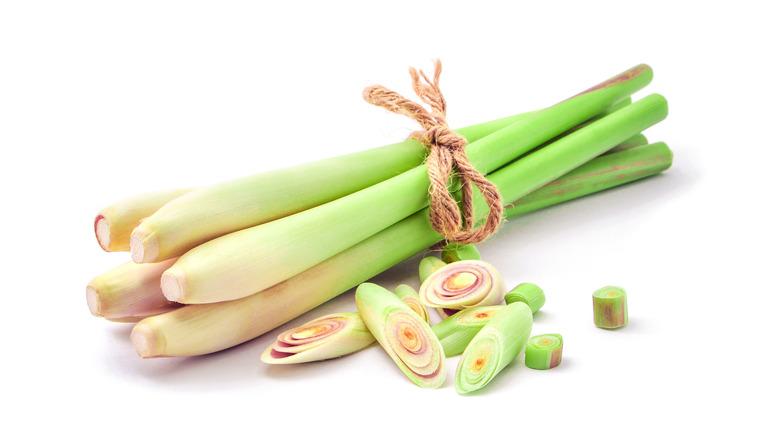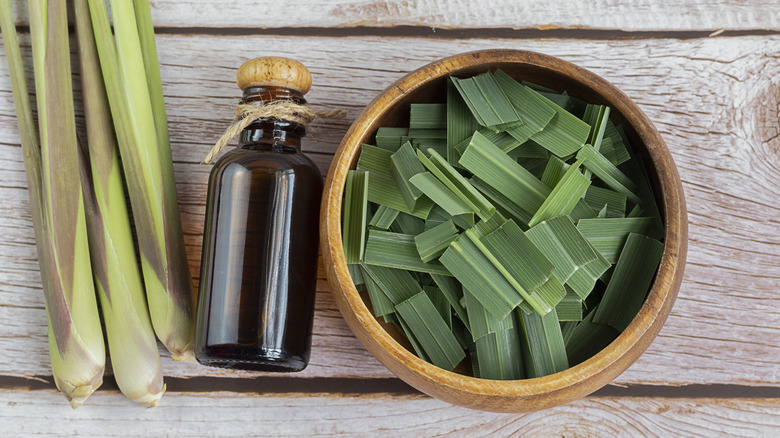What To Look For When Buying Fresh Lemongrass
It's no surprise that lemongrass (Cymbopogon citratus) aka sweet rush looks like ... well grass. The plant is characterized by large thin green blades that taper down to white ends. It is a popular ingredient in South East Asian cuisine and releases aromatics akin to the yellow citrus fruit (via Britannica). Some popular dishes using lemongrass are shrimp rolls, chicken banh mi, lime bars, ginger lemongrass soup, and much, much more. It is a great plant to bring a little lemony zest to any dish.
According to Healthline, it is well-beloved in Thailand where it is used in recipes, bug repellent, and essential oils for a variety of reasons besides its attractive scent and flavor. It is also used in many home remedies for a variety of ailments including things like pain and stress relief. Lemongrass tea is a delicious and health-promoting drink that is known to have antioxidant, antimicrobial, and anti-inflammatory properties, as well as the possibility of reducing the risk of cancer. The point is that lemongrass is good for us, and we should be using it in our food and drinks regularly to boost our health and dining experience. But if you're buying lemongrass for the first time there are a few things you should know.
The shopper's guide to lemongrass
For fresh lemongrass, your best bet is to head to the produce section in an Asian supermarket, though some specialty health stores will carry it as well. You can even buy your own plant to grow at home from some home and garden stores. According to America's Test Kitchen, lemon grass can grow tall, and we mean really tall (over 6 feet), but at the supermarket you'll find the leaves cut down to size and bundled together, looking a little like large green onions. They can be stored in the refrigerator in plastic wrap or for up to two weeks and can be frozen whole for several months in an airtight bag.
Masterclass tells shoppers that when looking for quality lemongrass, avoid leaves that look dried, feel soft, or have any browning. Instead, the fronds should look vigorously green, feel appropriately heavy, and have a firm quality to them. The lemongrass should also smell and taste rather fragrant especially before cooking, if you take a whiff and don't smell even the slightest hint of citrus, you should look elsewhere; it's worth it to find wonderfully fresh and fragrant lemongrass for your dishes and drinks.

